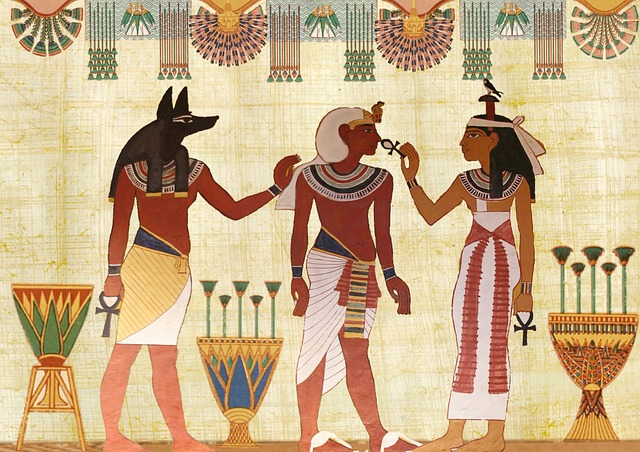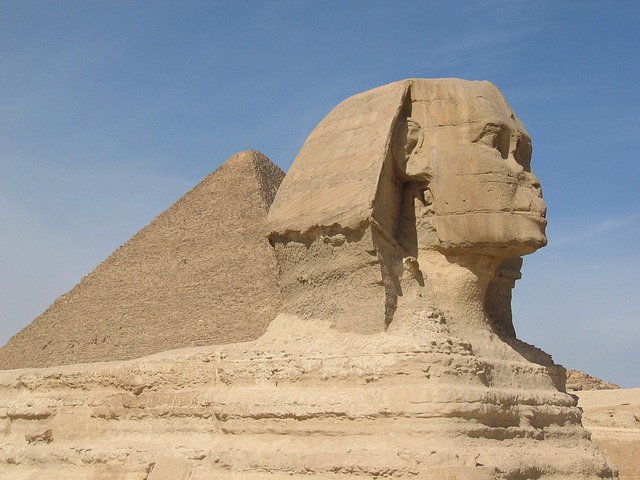With its unmatched natural beauty and calm weather, Korea surely deserves the name of Land of the Morning Calm. And visiting the stunning nature of South Korea requires you to have a solid travel plan; if you want to explore the wildlife of South Korea, you should pick the right time. Spring and autumn are perfect for a natural pilgrimage.
Jeju Island is the perfect starting point for a memorable journey in Korean nature. Jeju offers an unforgettable time hiking the ancient mountains, sightseeing, and discovering the gorgeous natural wonders of South Korea. After seeing all that Jeju has to offer, you can take a trip to Seoul, the capital.

If you want to follow this itinerary and much more, Intriq offers a 7-day luxury South Korea trip full of hiking, walking and sightseeing that’ll help you make the best of your stay in Korea.
North Pole has been an adventurer’s dream for a long time. With the renowned Ponant’s Le Commandant Charcot, the first high polar exploration cruise ship powered by liquefied natural gas specially conceived for the exploration of the polar regions, travellers are now able to access the once hard-to-reach destination in luxury and comfort.
“…the spirit of exploration…” – Yvonne Ho
Last week, we got the chance speaking with Ms Yvonne Ho, an expeditionist, whom shared with us about her experience onboard the Le Commandant Charcot. Through her words, we understand how important we have to respect the nature, and have a spirit of exploration while we approach the geographic North Pole and the area surrounding it. Many times, guests will wonder where they will land next or visit next while on the cruise, and the team onboard do not always have an answer for it. As part of this experience, guests are invited to enjoy the moments as they venture outside of their comfort zone, into previously uncharted territory.
Join us as we explore the once hard-to-reach destination!
Sicily, the stunning island in the Mediterranean, boasts a rich history that has been preserved through its magnificent historical sites. From the ancient Greek and Roman ruins to the Baroque architecture, Sicily is a treasure trove of cultural and architectural heritage.
The Valley of the Temples, located in Agrigento, is a UNESCO World Heritage site that showcases the remains of ancient Greek temples. These temples were built in the 5th century BC, and they stand as a testament to the architectural prowess of the ancient Greeks.

The Roman Villa del Casale in Piazza Armerina is another historical gem that provides a glimpse into the opulence and luxury of Roman life. This villa is renowned for its intricate mosaics that depict scenes from Roman mythology and daily life.
The Cathedral of Monreale, a masterpiece of Norman architecture, is an awe-inspiring sight to behold. Its golden mosaics, intricate designs, and stunning architecture are a testament to the creativity and skill of the Norman craftsmen.

The charming mediaeval town of Erice is perched on a hill overlooking the Mediterranean, and its cobblestone streets, ancient fortifications, and mediaeval churches are a visual delight. The town’s imposing castle, built by the Normans, provides breathtaking views of the surrounding landscape.
Sicily’s historical sites are a treasure trove of cultural and architectural heritage that offers a glimpse into the island’s rich history. From the ancient Greek and Roman ruins to the Baroque architecture, Sicily’s historical sites are a must-visit for anyone interested in history, art, and architecture.
Nestled between the majestic Hajar Mountains and the shimmering Arabian Sea, the Arabian Fjords of Fujairah exude an aura of opulence and extravagance. The crystal clear waters of the fjords, dotted with magnificent limestone formations, offer a breathtaking view of nature’s beauty.
The rugged mountain ranges in the backdrop provide a stunning contrast to the tranquil waters, creating a mesmerizing landscape that beckons to the adventurous and the refined alike. The serenity and tranquility of the fjords are unparalleled, making it a sought-after destination for those seeking a luxurious escape from the hustle and bustle of everyday life.

As you sail through the tranquil waters, the stunning scenery takes your breath away, while the salty sea breeze invigorates your senses. The towering cliffs and rugged terrain envelop you in a sense of wonder and awe, reminding you of the infinite potential of nature.
The Arabian Fjords of Fujairah offer a glimpse of heaven on earth, an oasis of tranquility and luxury that is a must-visit for those seeking an escape into the lap of nature.
Ancient Egypt has long held a special fascination for historians and the general public alike. It is considered to be one of the most advanced ancient civilizations and it developed thousands of years before many other cultures around the world. The ancient Egyptians were renowned for their extraordinary architectural achievements, impressive developments in literature and art, as well as advances made in mathematics, astronomy, engineering, and medicine.
This ancient civilization is also known for its sophisticated religious beliefs and rituals as well as its advanced law structure. Thanks to archaeological discoveries over the years, we have a much better understanding of ancient Egyptian life than ever before – in which you can discover with live viewing of their important relics.

Egypt has been regarded as one of the greatest civilizations of all time, and there are many factors that have contributed to this. One such factor is its location along the Nile River, one of the longest rivers in the world. This river was vital for trade and development in ancient Egypt, providing access to resources and new lands.
The Egyptians were able to build flourishing cities up and down the course of the river and use it to grow their economy; this allowed them to develop strong political structures, advanced technologies, and create a rich culture that still stands out today. Experience for yourself how the ancient Egyptians used the river Nile by joining a luxury Nile cruise.

The contributions of ancient Egypt to fields such as mathematics, surgery, and astronomy remain unparalleled to this day. The Egyptians were the first civilization to develop early concepts of mathematics, including fractions and ratio calculations.
They were also the first people to create an advanced system for medical surgery. This highly developed craft included aspects of internal medicine and wound care, known to have been some of the most advanced practices at that time. Furthermore, the Egyptians had a great understanding of astronomy which allowed them to achieve groundbreaking advancements in engineering and architecture. All these incredible achievements demonstrate why Egypt is widely seen as one of the greatest civilizations ever known.

Egypt is famous for their diverse culture, complex religious beliefs, and impressive knowledge of science and mathematics. The Egyptian pharaoh were highly revered in their society, as the Egyptian religion was built around the idea that god offered protection and blessings provided by those appointed. Ancient Egyptians had an advanced understanding of God that included a reverence for god and goddess, nature, and ceremonies like mummification to preserve themselves in the afterlife. As such, Egyptian religion greatly shaped Egyptian culture as a whole — their beliefs were not only pervasive but also lasting over thousands of years.
During Egypt’s middle kingdom and old kingdom, Egyptians had a great awareness of God and embraced many aspects of natural theology; they understood and made contributions to medicine, astronomy, architecture, engineering, maths, literature, agriculture, agriculture systems engineering and the list goes on! Their reverence for spiritual matters gave them great wisdom which they used to develop advances in many areas. This combination of spirituality and ingenuity explains why Egypt remains a legendary civilization nearly 4000 years later.
Egypt is widely considered one of the most culturally rich and historically powerful civilizations ever to exist. This great society not only had a hand in the creation of some of the world’s earliest art and literature, but also played an important role in shaping the very languages we speak today.
Ancient Egyptian art has been captivating viewers around the globe for centuries, its intricate hieroglyphics, stunning statues of gods and goddesses, and symbols that convey stories and emotions to this day. Ancient Egyptian art was used to tell stories or serve religious purposes, such as wall carvings in tombs signifying life after death.
Nowadays, these works of ancient art can be seen in museums across the world, offering a unique experience or insight into the past. These pieces illustrate complex rituals and lifestyles of ancient Egyptians, along with providing a glimpse into their understanding of the universe. From painted pottery to stone tomb carvings—there is so much to explore when it comes to seeing ancient Egyptian artwork at museums today.

Ancient Egypt was a fascinating society that held a central place in the development of many ancient cultures around the world. It is widely known for its unique pyramid architecture, writing system, and well-preserved mummies.
Religion was an incredibly important aspect of life, playing a vital role in everyday life. Meanwhile, fashion also played an important role for both genders. Ancient Egyptian fashion was a reflection of societal status or class, and accessories played an important role in conveying this. While members of the upper classes often wore many accessories, such as ornate jewellery crafted from gold and precious stones, members of the lower classes would have worn simpler accessories.
Ancient Egyptian language was dominated by hieroglyphic writing. Hieroglyphs functioned as both words and symbols. The hieroglyphic writing system was an intricate form of communication that featured a combination of logographic, syllabic and alphabetic elements. Hieroglyphs decorated many temple walls, hieratic scriptures written on papyrus scrolls, and other artefacts such as pottery and jewellery from the time period.
This blending of symbols and writing gave the ancient Egyptians a great deal of freedom in their forms of expression. It has also posed difficulties for archaeologists trying to translate hieroglyphic writing in modern times, though some progress is being made thanks to large databases now available. Despite these challenges, hieroglyphic writing remains incredibly valuable as an insight into the culture, beliefs and daily life of the ancient Egyptians.

It is no surprise why Egypt, with its ancient civilization, has left a lasting impact on the world today. From pyramids to mummies and hieroglyphic scripts, the world has embraced and been captivated by this ancient culture. While Greece may be credited for creating a basis for modern democracy and philosophy, it owes much of its influence from Ancient Egypt’s role in art, language and cultural developments.
If you want to explore inspiration and a deep dive into the past, visit that mystical land of Egypt. Here there are still long-standing secrets to uncover, stories behind walls and time-tested treasures all waiting to become part of your holiday journey. Egypt is a place where memories are made that no photograph can ever fully catch – one must experience it in order to truly appreciate its majesty.
The Big 5 of Kruger National Park, Africa’s flagship wildlife reserve, is an awe-inspiring sight to behold. The park boasts a collection of the most iconic animals on the continent, including lions, leopards, rhinos, elephants, and buffalos.

The sight of a lion striding through the grasslands or a leopard lounging in a tree is sure to take your breath away. The sheer power and grace of these majestic creatures is a reminder of the raw beauty of nature. The elephants, with their towering stature and gentle demeanor, are equally impressive, as they move through the bushveld, grazing on leaves and bark.
The rhinos and buffalos, though not as glamorous as their feline and pachyderm counterparts, are no less important. Rhinos, in particular, are a vulnerable species, and their continued presence in Kruger is a testament to the park’s conservation efforts.

Whether you’re on a game drive or simply soaking up the atmosphere, the Big 5 of Kruger National Park is a sight that will stay with you forever. The park’s rich biodiversity and breathtaking landscapes make it one of the most awe-inspiring places on earth.
Nestled in the heart of Spain, Monfrague National Park offers a luxurious experience for birdwatchers. With over 200 species of birds, including rare and majestic ones like the Spanish imperial eagle and black stork, this park is a birdwatcher’s paradise.
Imagine waking up to the melodious chirping of birds and basking in the golden rays of the sun as you embark on a journey to spot rare avian species. You may see the magnificent griffon vultures soaring high above, or the Eurasian eagle owl perched on a rock, looking intently for prey.

As you explore the park’s various trails and viewpoints, you may also catch a glimpse of the colorful bee-eaters or the vibrant hoopoes. The lush vegetation, tranquil streams, and towering cliffs provide the perfect backdrop for your birdwatching adventure.
After a day of exploring, you can relax in luxury at one of the park’s cozy lodges, indulging in delicious local cuisine and reflecting on the day’s sightings. Monfrague National Park truly offers a luxurious and unforgettable bird watching experience for nature lovers and adventure seekers alike.
Lavaux Vineyard Terraces is a stunning UNESCO World Heritage Site located in Switzerland along the shores of Lake Geneva. The terraced vineyards stretch over 830 hectares and are home to numerous wineries producing some of Switzerland’s finest wines.
The history of Lavaux Vineyard Terraces dates back to the 11th century when monks from the nearby Abbey of Saint-Maurice began cultivating grapes in the region. Over time, the terraced vineyards were constructed, and they have been continuously maintained ever since.

Visitors to Lavaux can explore the vineyards on foot or by taking a scenic train ride that winds through the terraces. The area also offers a variety of hiking and cycling trails with spectacular views of the lake and the surrounding Alps.
Apart from wine, the region also offers culinary delights such as cheese, chocolate, and other locally produced goods. Lavaux Vineyard Terraces is a must-visit destination for wine enthusiasts, nature lovers, and anyone seeking a unique and beautiful cultural experience in Switzerland.
The landscapes of ancient Lycia is a breathtaking experience that takes you on a journey through the rugged mountains and stunning coastline of southwestern Turkey. Lycia was an ancient region that existed from the 15th century BCE until the 7th century CE, and it is rich in history and culture.
The hiking trails wind through traditional villages, ancient ruins, and beautiful natural landscapes, providing a unique insight into the history and culture of the region. The Lycian Way, one of the most popular trails, is a 540-kilometre route that stretches from Fethiye to Antalya and takes hikers through picturesque forests, rugged terrain, and pristine beaches.

Along the way, hikers will encounter historic sites such as the ancient city of Olympos, the Lycian rock tombs of Myra, and the ruins of Patara, a city that was once a major trading hub. The landscapes of ancient Lycia are truly stunning, with breathtaking views of the Mediterranean Sea, dramatic mountains, and lush forests.
Overall, hiking the landscapes of ancient Lycia is a unique and unforgettable experience that offers a glimpse into Turkey’s rich history and natural beauty.
Cappadocia, located in central Turkey, is renowned for its stunning and unique fairy chimney landscapes. These rock formations were created by the eruption of volcanoes millions of years ago, followed by centuries of erosion by wind and water.
The fairy chimneys are made up of soft tuff rock, which has been sculpted by the elements into a series of bizarre shapes, including cones, pillars, and pyramids. Some of these formations have been hollowed out and turned into homes, churches, and even hotels, creating a fascinating underground city.

Visitors to Cappadocia can explore the fairy chimney landscapes by foot, bike, or hot air balloon. Balloon rides are particularly popular, offering a bird’s-eye view of the extraordinary formations and the surrounding valleys and mountains.
The region’s unusual landscape and rich history have also made it a popular destination for hikers and cultural enthusiasts. Cappadocia’s underground cities, ancient rock churches, and museums provide a fascinating insight into the area’s past, while its unique scenery makes it one of the most captivating destinations in the world.